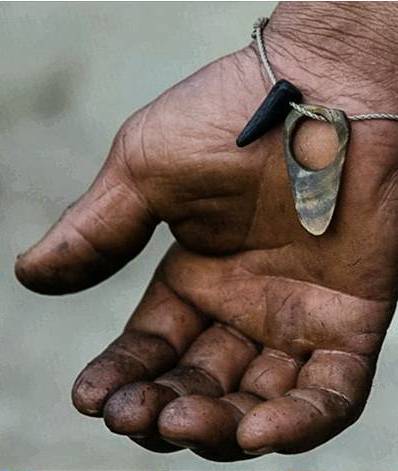News
New studies published in Nature Conservation provide valuable insights into the illegal trade in pangolins
Two new studies published today in Nature Conservation, led by WildCRU research colleague Dr Neil D’Cruze of World Animal Protection (WAP), and WildCRU’s Dr Lauren Harrington, provide valuable local insights into the illegal trade in pangolins.
Virtually unknown in the western world until recently, pangolins have gained media coverage by having the dubious honour of being the ‘most illegally traded animal in the world’. Pangolins are fascinating and unique animals, and as the only scaly mammal, have an entire mammalian order to themselves, comprising of eight species, all of which are threatened, with trade being the primary driver of decline. The IUCN has highlighted the need for more research on these highly threatened animals, with a particular focus on the harvest and use of pangolins, how that harvest is embedded in local livelihoods, and the trends in trade.
As part of the WildCRU’s long-term collaboration with Neil D’Cruze and WAP, we have been able to provide some of that information, by describing in considerable detail the dynamics of the trade in pangolins in a remote region of North East India – an area that has, until now, received relatively little research attention. The study, involved months of community engagement to learn more about the level of pangolin capture, reasons for and methods of capture, and the uses of animals caught.
Across China, other parts of Asia and Africa, pangolins are killed for their meat and for their scales, which are used in traditional medicine. Information gathered during our research suggested that meat was not a primary driver of trade: people would eat the meat if they caught a pangolin, but they preferred other types of wild meat. In India, pangolins have traditionally been killed for use in traditional medicines, for curios and for spiritual and ritualistic uses. However, our survey revealed that commercial gain (via urban middlemen) has now largely supplanted low-level traditional use, and that beliefs held about the medical properties of pangolin scales seem to be largely restricted to the older people in the community. The level of pangolin hunting appeared to be relatively low, with most hunters reportedly catching around one per year– it was not a primary, nor a regular, livelihood, rather an opportunistic activity that could provide a significant amount of money.
Rural incomes in this area are low, and a single pangolin can generate the equivalent of 4 months’ worth of the average family income, which some interviewees suggested was important for investing in their family’s healthcare or education. There seemed to be relatively little local awareness of the end-uses for pangolin scales, or the illegal dynamics of the trade chain, only that there were people who were willing to pay a lot of money for any pangolin scales secured, but locals were aware that the numbers of pangolins in the forest appeared to be declining.
The legality of these activities is slightly murky, as Indian law allows some provisions for tribal communities to hunt (although not to sell) wildlife outside protected areas. Gaining information on sensitive topics like this is difficult, but, as with many other studies on illegal trade, it is vital to gather these data to better understand the threat, and therefore develop the most appropriate conservation actions to better protect both wildlife and people. It is important to ensure that the information is given freely and in confidence (for example, here, to protect the identity of the individuals who helped us in the study, these data were anonymised and the names of the villages we worked in were not revealed).
The fact that many people spoke openly to us about hunting pangolins leads us to suspect that this is a widespread activity, which is likely to have major conservation implications at a wider scale. Punishing uninformed individuals at the bottom of the trade chain who kill pangolins would be unlikely to solve this conservation threat, as it appears that they are merely being exploited by the urban middle-men higher up the chain who are fully aware of the illegal implications of their actions. Rather, we suspect conservation solutions should focus on poverty reduction, to reduce the need for such hunting, alongside urban demand reduction efforts, as otherwise pangolins will continue to be hunted and imperilled, both here and elsewhere across their dwindling range.
Anyone who follows reports of the illegal wildlife trade will be familiar with the disturbing images of warehouses full of neatly curled bodies in their thousands, and piles of pangolins wrapped individually in freezer bags, seized along the trade route. Raising global awareness can help to generate funds and influence policy. Lauren Harrington’s analysis of social and editorial media surrounding the rising fame of pangolins showed that news coverage of these seizures often coincided with peaks in Google Trends (an indicator of the number of google searches – in this case, for the term ‘pangolin’), and we suspect that these types of shocking images are key to generating public interest. Despite their iconic status, public interest in pangolins , however, is still not equivalent to that directed at, for example, tigers, elephants or lions, so publicity and education needs to be sustained and, more importantly, turned into effective protection on the ground.
The Indian study is covered in an online article in National Geographic.
-
 Indian pangolin (Manis crassicaudata) © Neil D'Cruze
Indian pangolin (Manis crassicaudata) © Neil D'Cruze -
 Pangolin scale worn as a charm bracelet, Assam, North East India © Neil D'Cruze
Pangolin scale worn as a charm bracelet, Assam, North East India © Neil D'Cruze -
 A bag of pangolin scales intended for commercial sale, Assam, North East India © Neil D'Cruze
A bag of pangolin scales intended for commercial sale, Assam, North East India © Neil D'Cruze





